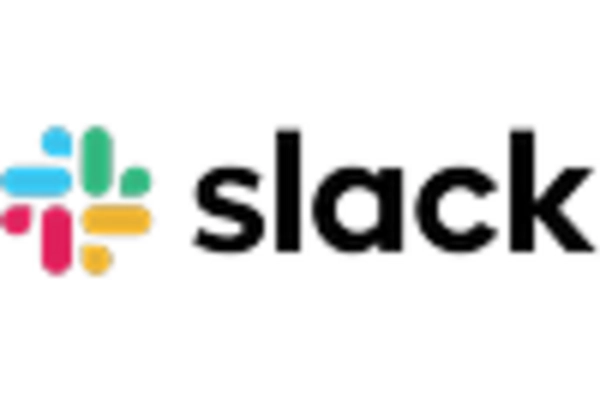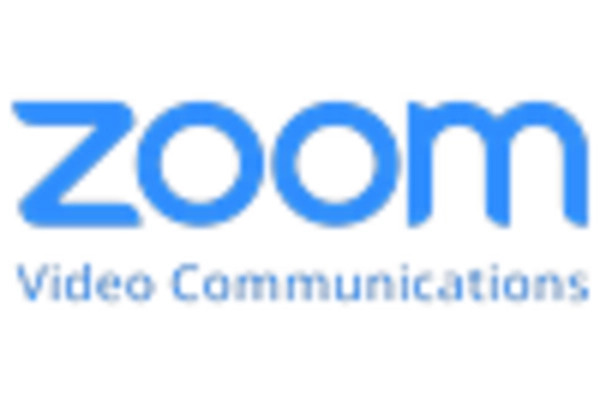Adoption of Cloud-Based Solutions
The shift towards cloud-based solutions is a significant driver in the Internal Communication Software Market. Organizations are increasingly adopting cloud technology for its scalability, flexibility, and cost-effectiveness. Cloud-based communication tools allow for seamless updates and integrations, ensuring that employees have access to the latest features and functionalities. Data indicates that the cloud communication market is expected to grow at a compound annual growth rate of 15% over the next five years. This trend is likely to continue as businesses seek to enhance their communication infrastructure while minimizing IT overhead costs. The adoption of cloud-based internal communication software is expected to play a crucial role in shaping the future of the Internal Communication Software Market.
Rising Demand for Remote Work Solutions
The Internal Communication Software Market is experiencing a notable surge in demand for solutions that facilitate remote work. As organizations increasingly adopt flexible work arrangements, the need for effective communication tools has become paramount. According to recent data, approximately 70% of employees now work remotely at least part of the time, necessitating robust internal communication systems. These systems not only enhance collaboration but also ensure that employees remain connected and informed, regardless of their physical location. This trend is likely to continue, as companies recognize the importance of maintaining a cohesive work environment, even when teams are dispersed. Consequently, the Internal Communication Software Market is poised for growth, driven by the need for tools that support remote collaboration and communication.
Focus on Employee Well-being and Engagement
In the Internal Communication Software Market, there is an increasing emphasis on employee well-being and engagement. Organizations are recognizing that effective communication is crucial for fostering a positive workplace culture. Tools that promote transparency, feedback, and recognition are becoming essential components of internal communication strategies. Data suggests that companies with high employee engagement levels experience 21% higher profitability. As a result, businesses are investing in software solutions that not only facilitate communication but also enhance employee satisfaction and retention. This focus on well-being is likely to drive the demand for innovative internal communication tools that support a more engaged workforce, thereby propelling the growth of the Internal Communication Software Market.
Integration of Advanced Analytics and Reporting
The Internal Communication Software Market is witnessing a trend towards the integration of advanced analytics and reporting features. Organizations are increasingly seeking tools that provide insights into communication effectiveness and employee engagement levels. By leveraging data analytics, companies can identify communication gaps and areas for improvement, leading to more informed decision-making. Recent studies indicate that organizations utilizing analytics in their communication strategies see a 25% increase in employee productivity. This growing demand for data-driven insights is likely to propel the development of sophisticated internal communication software solutions, enabling businesses to optimize their communication strategies and enhance overall organizational performance.
Growing Importance of Data Security and Compliance
In the Internal Communication Software Market, the growing importance of data security and compliance is becoming increasingly evident. As organizations handle sensitive information, the need for secure communication channels is paramount. Regulatory requirements, such as GDPR and HIPAA, necessitate that companies implement robust security measures within their communication tools. Recent surveys indicate that 60% of organizations prioritize data security when selecting internal communication software. This heightened focus on security is likely to drive the development of solutions that not only facilitate communication but also ensure compliance with industry regulations. Consequently, the demand for secure internal communication software is expected to rise, influencing the trajectory of the Internal Communication Software Market.


















Leave a Comment